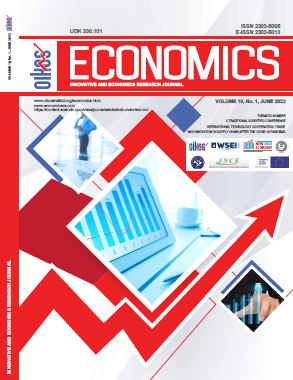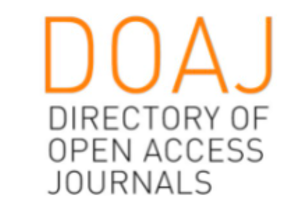THE IMPACT OF THE COVID 19 CRISIS ON THE FISCAL STABILITY OF REPUBLIC OF SRPSKA
DOI:
https://doi.org/10.2478/eoik-2022-0006Keywords:
GDP, deficit, Fiscal consolidation, Fiscal stability.Abstract
The consequences of the COVID-19 crisis have had a negative impact on the
fiscal stability of Republic of Srpska. Although the crisis is not officially over yet,
a large number of countries needed to implement fiscal consolidation.
Republic of Srpska is one of the small and open economies that are exposed
to various negative market distortions. COVID-19 crisis of the most important
foreign trade partners of the Republic Srpska has had a negative impact on the
economy of Republic Srpska.
The basic idea of the paper is based on the need to analyze the impact of the
COVID-19 crisis on the fiscal stability and public finances of Republic of Srpska.
The subject of the research is the analysis of the implementation of the fiscal
consolidation procedure in Republic of Srpska and the impact on its economic
growth. For the implementation of fiscal consolidation, the choice of methods
and instruments on which the process of implementing fiscal consolidation is
based is very important.
Fiscal consolidation is necessary due to the consequences caused by the
COVID-19 crisis and the enormous growth of the deficit. The analysis proves
that the measures applied to rehabilitate the crisis have resulted in improved
fiscal stability, which ultimately had a positive impact on economic growth. Fiscal
consolidation will be successful and expansive if it is carried out by a combined
method of increasing revenues and reducing expenditures and if the increase in
revenues is caused by the growth of economic activity and not by the tax burden.
References
Đukić A., Štaka M., Drašković D. (2021) Đukić A., Štaka M., Drašković D. (2021). The Impact of the Covid-19 pandemic on the macroeconomic aggregates of the European union. ECONOMICS, 9 (2), 91-108.
http://oikosinstitut.org/wp-content/uploads/2021/12/%C4%8
Alesina A., Ardagna, S. (1998). Tales of Fiscal Adjustment. Economic Policy, 13 (27), 488-545.
Retrieved from: https://dash.harvard.edu/bitstream/handle/1/2579822/Ardagna_TalesFiscal.pdf
Alesina, A., Ardagna, S. (2012). The Design of Fiscal Adjustments, NBER Working Paper, No. 18423, Washington, DC. National Bureau of Economic Research. Retrieved from: https://www.nber.org/papers/w18423
Carmen M. Reinhart and Kenneth S. Rogoff (2010). Growth in a Time of Debt. American Economic Review 100(2). 573–578.
Retrieved from: http://www.aeaweb.org/articles.php?doi=10.1257/aer.100.2.573
Cottarelli, C., Vinals, J. (2009). A Strategy for Renormalizing Fiscal and Monetary Policies in Advances Economies, IMF Staff Position Note, Br. 09/22. Retrieved from: https://www.elibrary.imf.org/view/journals/004/2009/022/article-A001-en.xml
Drazen, A., Grilli, V. (1993). The Benefits of Crises for Economic Reforms. American Economic Review, 83 (3), 598-607.
Retrieved from: https://econpapers.repec.org/article/aeaaecrevv_3a83_3ay_3a1993_3ai_3a3_3ap_
a598607.html
Estevao, M. Samake, I (2013). The Economic Effects of Fiscal Consolidation with Debt Feedback,
IMF Working Paper. Retrieved from: https://www.elibrary.imf.org/view/journals/004/2009/022/article-A001-en.xml
George C. Tsibouris, Mark A. Horton, Mark J. Flanagan, and Wojciech S. Maliszewski (2006). Experience with Large Fiscal Adjustments. International Monetary Fund Washington DC. Retrieved from: file:///C:/Users/Korisnik/Downloads/_op246%20(7).pdf
Gojković, B. (2021). Interdependence between Fiscal consolidation and economic growth in EU countries: the role of development level.
http://www.ae.ef.unibl.org/index.php/ae/article/view/415/383
Illera, R.M., Mulas-Granados, C. (2008). What makes fiscal consolidations last? A survival analysis of budget cuts in Europe (1960–2004). Public Choice 191(3-4), 147-161. Retrieved from: https://doi.org/10.1007/s11127-007-9211-8.
Josef E. Stiglitz (2004). Ekonomija javnog sektora. First Edition. Beograd.
Klajs, M., Moessinger, M-D. (2016). The Long-run Effect of Fiscal Consolidation on Economic Growth: Evidence from quantitative case studied, Valencia, Spintan, Working Paper Series, No. 6. Retrieved from: http://www.spintan.net/wp-content/uploads/public/WP_06_Kleis_Moessinger.pdf
Lovrić, M., Komić, J., Stević, S (2006). Statistical analysis: methods and applications. Banja Luka. Faculty of Economics.
Krajišnik M, Gligorić D., Gojković B. (2019). Effects of fiscal consiladion in Western Balkan Countries. Proceedings of Rijeka Faculty of Economics, 37(2), 527-551. DOI: 10.18045/zbefri.2019.2.527
Krajišnik М., Gojković B. (2017). The impact of the state of the national economy on the financing of the Health system of the Republic of Srpska. Acta Economica, 15(27), 257-278. DOI: 10.7251/ACE172725K
Mirdala, R. (2013). Lessons learned from Tax vs. Expenditures Based Fiscal Consolidation in the European Transition Economies, William Davidson Institute, Working Paper, br. 1058.
Retrieved from: https://ideas.repec.org/p/wdi/papers/2013-1058.html
Reinhart, C. M.,Rogoff, K. S. (2010). Growth in a Time of Deb. American EconomicReview: Papers& Proceedings, 100 (2), 573-578.
Retrieved from: https://scholar.harvard.edu/files/rogoff/files/growth_in_time_debt_aer.pdf
Sutherland, D., Hoeller, P., Merola, R. (2012). Fiscal consolidation: How much, how fast and by what means? OECD The Economic Policy Paper Series, No 1.
Retrieved from: https://www.oecd.org/economy/outlook/fiscalconsolidationhowmuchhowfastandbywhatmeans.html
Matthew, R., Cochrane D. (2012). Student Debt and the Class of 2011. Project on Student Debt. October.
Retrieved from: https://eric.ed.gov/?id=ED537338
Von Hagen, J., Strauch, R. (2001). Fiscal Consolidations- Quality, Economic Conditions and Success. Public Choice, 109(3-4), 327-346. Retrieved from: https://EconPapers.repec.org/RePEc:kap:pubcho:v:109:y:2001:i:3-4:p:327-46
Database used for empirical analysis from:
https://www.imf.org/en/Publications/WEO/weo-database/2020/October
Downloads
Published
How to Cite
Issue
Section
License
Copyright (c) 2022 ECONOMICS - INNOVATIVE AND ECONOMICS RESEARCH JOURNAL

This work is licensed under a Creative Commons Attribution-NonCommercial-NoDerivatives 4.0 International License.























